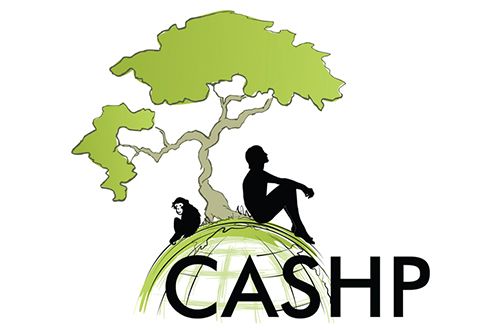The older I get the more I appreciate those who explore and document the history of science, and especially the history of paleoanthropology. All of the analyzers and synthesizers among us, and even those who contribute new data, are critically dependent on the researchers who came before us. The two quotations below[1,2] capture this reality more elegantly than I ever could. So for me, one of the attractions of antiquarian and second hand bookshops in the UK is the outside chance that I might pick up a copy of a work by giants such as Erasmus or Charles Darwin (very, very, long odds), Thomas Henry Huxley (very long odds), Arthur Keith, Wood Jones or Le Gros Clark (long odds).
Unless you have a rich relative, or the inclination to rob a bank, it is best to avoid the quality antiquarian bookshops, but in the UK there are still treasures to be found in second-hand bookshops that either specialize in, or cover, natural history. In my experience it takes only a few minutes to work out whether to thank the owner politely and move on or to settle in for a serious and systematic browse. I know that Abebooks and other internet sites mean that you can now “browse” from your laptop or iPhone, but as convenient as such sites are, at least for now they cannot replicate the sight, smell and feel of real books.
My first success, and my first lessons in browsing, came a long time ago in a bookshop in Hitchin, a small market town just north of London. It had a small room devoted to natural history, so I settled in to scrutinize their stock. After a while I was delighted to find a copy of the second UK edition of Huxley’s Evidence as to Man’s Place in Nature and I was beginning to scan rather than scrutinize the books when I found a copy of one of Osman Hill’s series of monographs on living primates3. Then I found a second, and then a third. It was only when I had the wit to open one of them and look at the title page (my first lesson in browsing) that I realized all of these volumes were not only signed by Osman Hill, but they were evidently his own library copies. When in doubt ask the bookseller (my second lesson in browsing), so I enquired if she remembered where these books came from. She told me that the previous year Osman Hill’s widow had come into the bookshop to enquire if the owner was interested in her husband’s library. The owner bought most of the books she was offered, and she was glad to point me in the direction of more of the library, including Osman Hill’s copies of several of the Weidenreich Sinanthropus monographs and his copy of Theodore Ruch’s Bibliographia primatologica. I did not meet Osman Hill in person, but I am old enough to have attended meetings of the Primate Society of Great Britain that he also attended. It was a privilege to have the Osman Hill’s monographs and his paleoanthropology books, but it remains a special privilege to have his own copies.
The books were not expensive, but I remember that my purchases made a serious dent in my then very modest disposable assets. I was a junior doctor on the lowest rung of the ladder earning (in 1971) forty-eight pounds a month (c. $80). I know because I still have my first pay slip! The Hitchin bookshop purchases were an unusually good haul and it was many years before I was similarly blessed.
Such is the attraction of book shops that if I am travelling by car in the UK my children add at least an hour onto my estimate of when I plan to arrive at their house. They call it “bookshop and salt-glaze stoneware time”. More about the former and an explanation of the latter in due course. My thanks to Bill and Helen Bynum for researching the quotations so thoroughly.
References
1“We are like dwarfs sitting on the shoulders of giants. Our glance can thus take in more things and reach farther than theirs. It is not because our sight is sharper nor our height greater than theirs; it is that we are carried and elevated by the high stature of the giants.”
Attributed to the French theologian and philosopher Bernard of Chartres (d. c.1130) in John of Salisbury, Metalogicon (1159), Book III, chapter 4, quoted in E. Jeaneau, ‘Bernard of Chartres’, in C. C. Gillispie, Dictionary of Scientific Biography (1971), Volume 3, pp.19.
2“It could be said of me that in this book I have only made up a bunch of other men’s flowers, providing of my own only the string that ties them together.”
Montaigne: Essays (1580, ed. M. Rat, 1958) Book 3, Chapter 12.
3Between 1953–1974 The Edinburgh University Press published eight volumes entitled ‘Primates Comparative Anatomy and Taxonomy’; William Charles Osman Hill was the sole author of all eight volumes. For some reason I have been unable to fathom why volume 8 was published before volume 7. The final, ninth, volume was still in preparation when Osman Hill died in 1975.


